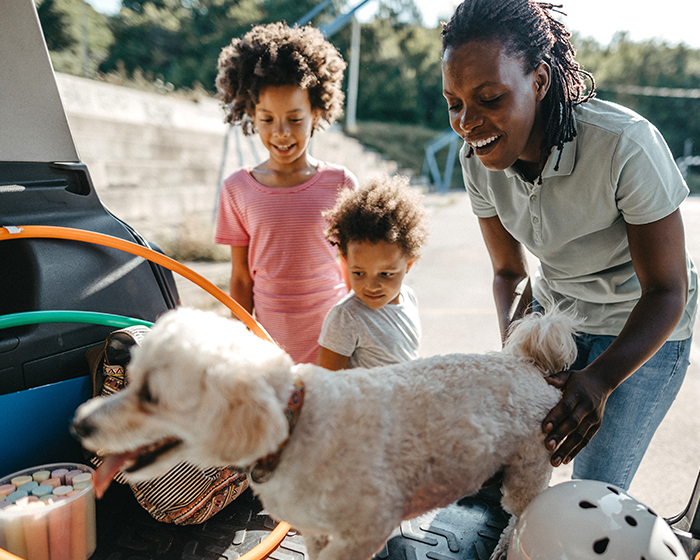Pet Safety
Protect the ones you love — all of them.

Planning for your loved ones’ safety means planning for the safety of your pets. While your personal safety should always be your first priority, it’s important to consider how your pets fit into any plans you make to leave.
Safety planning
Safety plans should consider everyone impacted by the abuse you’re experiencing. Our advocates are available 24/7 to help you create a safety plan that includes planning for pets. We can help you identify measures to improve safety at home, discuss options for after you leave your partner, and direct you to further resources on animal welfare in abusive situations.
Pets and domestic violence
Pets in abusive situations often experience violence similarly to people. As a result, as many as 65 percent of domestic violence victims are unable to escape abusive situations because they’re concerned about what will happen to their pets. Taking steps to ensure your pet’s protection will make it easier to bring them with you when the moment is right.

Take steps to prove ownership of your pet. Have them vaccinated and licensed in the place where you live, making sure the registrations are done in your name. Take steps to have them changed if necessary.
If possible, avoid leaving pets alone with an abusive partner.
If your pet is microchipped, make sure your abusive partner is not listed as a contact.
If you’re planning to leave, talk to friends, family, or your veterinarian about temporary care for your pet if necessary. If that’s not an option, search for services that assist domestic violence survivors with safekeeping for their pets, or contact your local domestic violence shelter or animal shelter directly. For help finding an animal shelter, visit the Pet Help Finder website.
If you decide to leave, bring extra provisions for your pets including food and medications, copies of their medical records, and important phone numbers.
If you’re thinking about getting a protective order, find out if your state allows pets to be included in such orders.
After leaving, consider changing veterinarians and avoid leaving pets outside alone to ensure their long-term safety.
If you’ve had to leave your pet behind with an abusive partner, consider seeking assistance from local services like animal control to see if they can intervene.
The Animal Welfare Institute offers additional tips for safety planning with pets as well as state-by-state resources for pet-friendly shelters through the Safe Havens Mapping Project. Organizations like Georgia-based Ahimsa House and Littlegrass Ranch in Texas offer further resources for safety planning with animals, particularly for non-traditional pets that may be more difficult to transport.
We're here to support you.
You are not alone.



